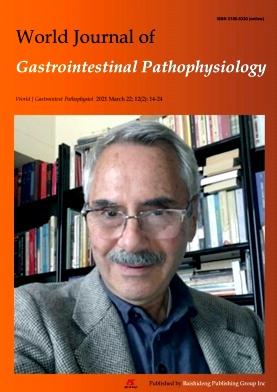Role of nitric oxide in the pathogenesis of Barrett's-associated carcinogenesis.
引用次数: 7
Abstract
Barrett's esophagus (BE), a premalignant condition to Barrett's adenocarcinoma (BAC), is closely associated with chronic inflammation due to gastro-esophageal reflux. Caudal type homeobox 2 (CDX2), a representative marker of BE, is increased during the metaplastic and neoplastic transformation of BE. Nitric oxide (NO) has been proposed to be a crucial mediator of Barrett's carcinogenesis. We previously demonstrated that CDX2 might be induced directly under stimulation of large amounts of NO generated around the gastro-esophageal junction (GEJ) by activating epithelial growth factor receptor in a ligand-independent manner. Thus, we reviewed recent developments on the role of NO in Barrett's carcinogenesis. Notably, recent studies have reported that microbial communities in the distal esophagus are significantly different among groups with a normal esophagus, reflux esophagitis, BE or BAC, despite there being no difference in the bacterial quantity. Considering that microorganism components can be one of the major sources of large amounts of NO, these studies suggest that the bacterial composition in the distal esophagus might play an important role in regulating NO production during the carcinogenic process. Controlling an inflammatory reaction due to gastro-esophageal reflux or bacterial composition around the GEJ might help prevent the progression of Barrett's carcinogenesis by inhibiting NO production.一氧化氮在巴雷特相关癌变发病机制中的作用。
Barrett食管(BE)是Barrett腺癌(BAC)的一种癌前病变,与胃食管反流引起的慢性炎症密切相关。尾侧型同源盒2 (Caudal type homeobox 2, CDX2)是BE的代表性标志物,在BE的化生和肿瘤转化过程中增加。一氧化氮(NO)已被认为是巴雷特癌发生的重要介质。我们之前证明,在胃-食管交界处(GEJ)周围产生大量NO的刺激下,CDX2可能以不依赖配体的方式激活上皮生长因子受体,从而直接诱导CDX2。因此,我们回顾了NO在Barrett癌变中作用的最新进展。值得注意的是,最近的研究报道,在正常食管、反流性食管炎、BE或BAC组中,食管远端微生物群落存在显著差异,尽管细菌数量没有差异。考虑到微生物成分可能是大量NO的主要来源之一,这些研究提示食道远端细菌组成可能在致癌过程中调节NO的产生中发挥重要作用。控制由胃食管反流引起的炎症反应或GEJ周围的细菌组成可能有助于通过抑制NO的产生来防止巴雷特癌的进展。
本文章由计算机程序翻译,如有差异,请以英文原文为准。
求助全文
约1分钟内获得全文
求助全文

 求助内容:
求助内容: 应助结果提醒方式:
应助结果提醒方式:


